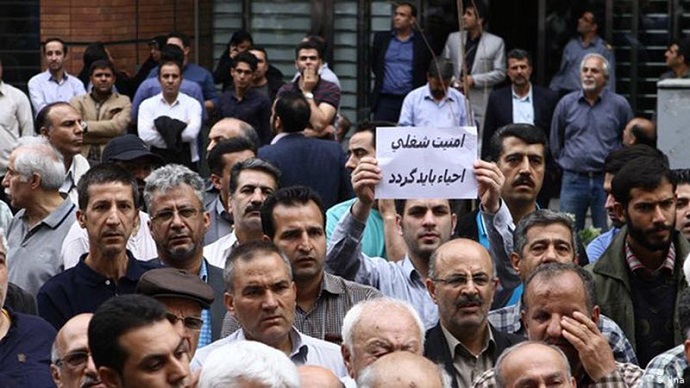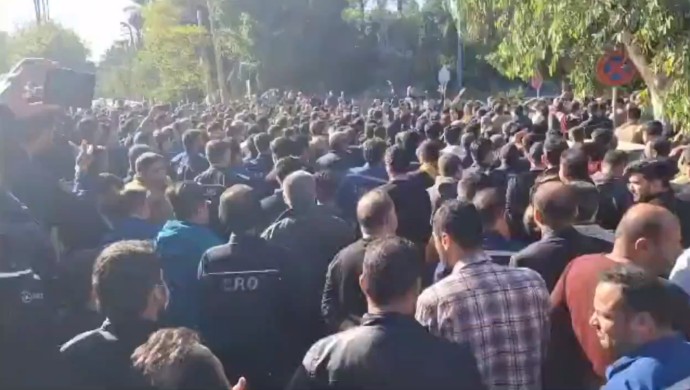
As the Persian year 1402 came to a close on March 19, Iran’s government announced the minimum wage for the upcoming year, casting a shadow of poverty over millions of worker families just as they prepared for Nowruz, the Persian New Year.
This announcement marks another year where the disparity between wages and the soaring cost of living plunges the working class deeper into hardship.
The timing of the minimum wage announcement, a tactic repeatedly used by the regime, aims to limit workers’ ability to protest by waiting until the very last day of the year. This year, the decision was unveiled amidst claims of a 35% increase in base salary and a mere 22% increase for other levels, as reported by the official IRNA News Agency. However, this increment falls drastically short of the country’s staggering inflation rate, officially reported at 43% by the regime’s Central Bank, with some estimates and reports suggesting much higher, particularly in essential goods like food.
Reports from the state-run Setareh Sobh newspaper underline the dire situation, noting a 100% to 200% price increase in fruits and vegetables over two years, and a more than fourfold increase in meat prices since the summer of 2021. The widening gap between inflation and wages has been a persistent issue, with each year bringing greater poverty and deprivation to Iran’s workers.

The minimum wage announcement was met with criticism and protests, notable for its failure to address the real needs of workers.
Despite initial claims by Minister of Labor Sowlat Mortazavi of a 22% wage increase sparking outrage among labor representatives, the eventual 35% increase still fails to meet the poverty line. Samia Golpour, head of the Supreme Center of Labor Unions, pointed out that even a 300% increase would be insufficient to reach the poverty line, highlighting the severe undervaluation of worker wages in Iran.
Moreover, the regime’s approach to determining the minimum wage, which neglects comprehensive consideration of living costs including housing, healthcare, and food, violates both international standards and its own laws. Recent efforts to justify low wages include the introduction of severely reduced “affordable food baskets,” which lower the standards for basic nutrition for workers, further illustrating the government’s detachment from the realities faced by its citizens.
As housing costs consume the majority of workers’ incomes, many are forced into poverty-stricken outskirts, exacerbating the social divide. The current situation has led to a growing realization among Iran’s workers that the regime’s corrupt governance offers no future but decline.
Facing severe restrictions on organizing and unionizing, many see joining organized resistance as the only path to change. This year’s wage announcement not only reflects the ongoing economic struggle of Iran’s working class but also highlights the broader issues of governance, inflation, and the suppression of dissent within the country. As workers face another year of challenges, the gap between the government’s policies and the needs of its people has never been more apparent.

MEK Iran (follow us on Twitter and Facebook), Maryam Rajavi’s on her site, Twitter & Facebook, NCRI (Twitter & Facebook), and People’s Mojahedin Organization of Iran – MEK IRAN – YouTu
